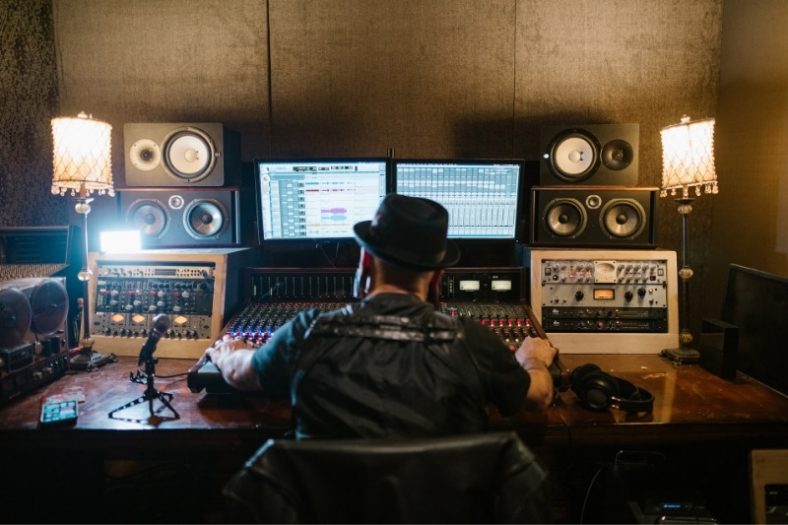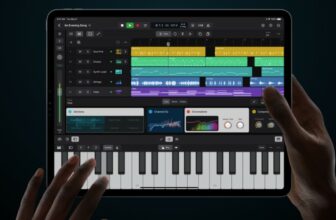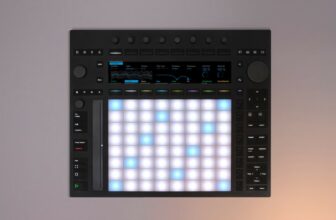What is the Loudness Penalty (How to Avoid It)

The loudness penalty refers to the amount of dB in a master track that will be turned down by streaming services upon uploading, in a process known as loudness normalization.
Loudness normalization measures the sonic characteristics of a master track and applies volume to it, depending on whether it is quieter or louder than it should be.
Contents
Why do streaming services normalize tracks?
Streaming services normalize tracks because they don’t want their users to be exposed to quick changes in volume. When you’re listening to a playlist on Spotify, for instance, you want every song to sound as loud as the other. This way, you will not be forced to change the volume of your speakers from track to track, and you will have a more pleasant listening experience.
Why is the loudness penalty important for musicians/producers?
The loudness penalty is significant for musicians and producers because it affects the way master tracks sound when uploaded to streaming platforms. In extreme cases, the loudness penalty (which is basically a direct addiction or subtraction of volume) can give way to unwanted sound artifacts, such as small clicks and noises.
Most people will listen to your songs on streaming services such as Spotify, TIDAL, and YouTube. To make sure your finalized tune sounds as good to anyone else as it did to you when you finished mastering it, you want to avoid the loudness penalty and comply with the pre-defined loudness limits of streaming services. Going slightly over or under the limit is okay, but there’s no real advantage in taking the risk.
How do I know if my master track is loud enough?
To know whether your master track is loud/quiet enough to avoid the loudness penalty, you should be familiarized with at least four loudness measurements: Peak, True Peak, RMS, and, most importantly, LUFS. While peak detection is included in most digital audio workstations (DAWs) and mixing tables, external software may be required to accurately measure true peak and LUFS.
What is ‘peak’?
Peak measures the loudest level reached by a signal. Pretty much like a mountain peak, the peak of a song is the point at which it is highest (i.e., loudest). In digital audio, master-track peak levels are often overlooked because they can be easily tamed by a limiter.
A limiter is an audio effect that works as a high-ratio compressor and prevents peaks from going over 0dB or any other pre-established value. Ideally, a master track should peak at 0dB.
What is ‘true peak’?
Like Peak, True Peak also measures the loudest level reached by a signal. However, it does so in a much more accurate way. An increasingly-necessary measurement in digital audio production, true peak can pick up the slightest changes in the peak level of a master track. While most commercially-released songs have a 0dB Peak, they often have a True Peak of 0.5 to 1dB.
What is ‘RMS’?
Before digital audio became the standard in music production, RMS was the best metric for dictating how loud a song is. RMS is still used today, but it’s often considered to be an outdated way of evaluating the loudness of a signal. Why?
Because RMS (meaning Root Mean Square) measures loudness according to the voltage power of the signal. However, this purely technical measurement is not an accurate representation of what loudness is truly about. And that’s why LUFS came into the picture.
What is ‘LUFS’?
LUFS stands for Loudness Unit Full Scale and is the most accurate measurement for evaluating the loudness of a signal. Unlike RMS, LUFS is not based on voltage power, but on the loudness of sound as perceived by humans.
There’s no exact way of telling whether a sound is loud or not since loudness is a subjective concept that depends on aspects as peripheral as listening habits, hearing loss, resistance to noise, and personal music preferences.
Regardless, LUFS is considered to be today’s most trustworthy metric for evaluating loudness, and it’s the one that matters if your goal is to understand and avoid the loudness penalty.
What is the ideal LUFS value to avoid the loudness penalty?
Most sources recommend -14 LUFS as the ideal level for avoiding the loudness penalty. You should also be safe with -12 LUFS. However, the best way to make sure your master track is not going to be overly subjected to loudness normalization is by using software designed to measure true peak and LUFS levels according to the loudness standard of the world’s most popular streaming services.
Why is this so important? On the one hand, because you should always know how loud your track is, especially during mastering. On the other hand, because the loudness penalty is different from streaming service to streaming service.
Deezer, for instance, applies roughly twice the volume reduction that Spotify and TIDAL do. In many cases, professional mastering engineers will export multiple master tracks of the same song to more precisely comply with these guidelines.
How to check for the loudness penalty?
To check for the loudness penalty and know exactly how loud your master track is, you should use software specifically designed for the purpose. There are great options out there, from paid pro-level software to free in-browser meters. When using a VST to check the loudness of your song, please make sure you place it in your DAW’s master channel.
Loudness Penalty Analyzer
Once you complete your master track, you should check it on LoudnessPenalty.com to verify how it will be affected by the world’s most popular streaming services. The Loudness Penalty Analyzer is a great free tool that tells you how many dB will be subtracted from your song upon uploading.
The best part is that you can use the Loudness Penalty Analyzer on your browser. Currently, it measures the exact loudness penalty values of YouTube, Spotify, TIDAL, Amazon Music, Deezer, and Pandora. It also offers a rough estimation of the loudness penalty of iTunes.
The only downside is that you will only be able to check the loudness penalty of your master track once you export it. For real-time analysis of the loudness of your track, you can buy the Loudness Penalty plugin and use it in your DAW.
YouLean Loudness Meter
As far as loudness meters go, you can’t go wrong with the YouLean Loudness Meter VST. This piece of audio software is not only free but also very comprehensive and easy to use. It displays real-time values of short-term and integrated LUFS and a very handy true peak reader.
You need to buy the plugin to get access to all the features, but the free version should be good enough to scan a master track and make sure it’s sitting in the -12 to -14 LUFS “sweet spot.”
WLM Plus Loudness Meter
WLM Plus is a professional VST that comes with the seal of quality of Waves. While it doesn’t offer a loudness-penalty overview, it’s a precise loudness meter with momentary, short-term, and long-term LUFS readouts, as well as true peak analysis.
Mastering the Mix’s LEVELS
Produced by Mastering the Mix, LEVELS is a VST designed for creating better mixes and masters. It includes mastering presets for CD, streaming, and YouTube (amongst others). LEVELS stands out due to its innovative, all-in-one design. While it offers relatively precise LUFS and true peak readouts, LEVELS may take some time to get accustomed to.
How to avoid the loudness penalty?
You can avoid the loudness penalty by scanning your master track in tools such as Loudness Penalty Analyzer and making sure it isn’t being overly affected by volume reduction. There’s nothing wrong with a small loudness penalty (like -1 or -2dB), but what can you do if your master track is being subjected to an over-the-top reduction in volume?
There are some things you should keep in mind while mixing and mastering to ensure your finalized songs will not be overly affected (and potentially damaged) by the loudness penalty upon uploading:
Leave some headroom for mastering
A good mix depends on good composition, and a good master depends on a good mix. One of the most common mistakes inexperienced producers do while mixing is snubbing the headroom.
While mixing, you should go for a nice balance between tracks, and not necessarily loudness. It’s good to leave some headroom for the mastering engineer to do his thing because, in part, making a track sound loud is a mastering engineer’s job.
Just turn down the volume
Your master track is sitting at -9 LUFS, and you want to turn it down to a safer -12 LUFS. To do so, just turn down the volume and watch those LUFS go down! While lowering the volume of the master track sounds like the easiest way to do it, I would recommend using either gain reduction or a nice master-channel compressor.
Yes, these can change the sonic characteristics of your master, but any LUFS reduction should do so—after all, loudness is a concept dependent on human perception.
Compress target frequencies only
More often than not, the loudness of your master track will be driven up by a specific instrument or set of frequencies. Loud frequencies can be detected by using a true peak analyzer and a frequency spectrum. If you notice that your master track is going over your desired LUFS value anytime a particularly strong kick-drum or vocal shout hits, you should only compress the frequencies associated with such sounds.
The safest way to do so is not by using EQ (which can have a very significant sonic impact), but by applying a multiband compressor to the master channel. For this purpose, I would recommend the Fab Filter Pro-MB plugin—in addition to being very exact, it shapes dynamics beautifully, especially when it comes to low frequencies.
Summary
The loudness penalty is of particular concern to musicians and producers since it affects the quality of streaming platforms’ master recordings. In severe situations, the loudness penalty might lead to undesirable sound artifacts such as little clicks and cracks.
Most people will listen to your songs on streaming services such as Spotify, TIDAL, and YouTube. To ensure that the completed track sounds as good to anybody else as it did to you when you finished mastering it, avoid the loudness penalty and follow streaming services’ pre-defined loudness restrictions. It’s all right to go slightly above or below the limit, but there’s no advantage in taking the chance.





